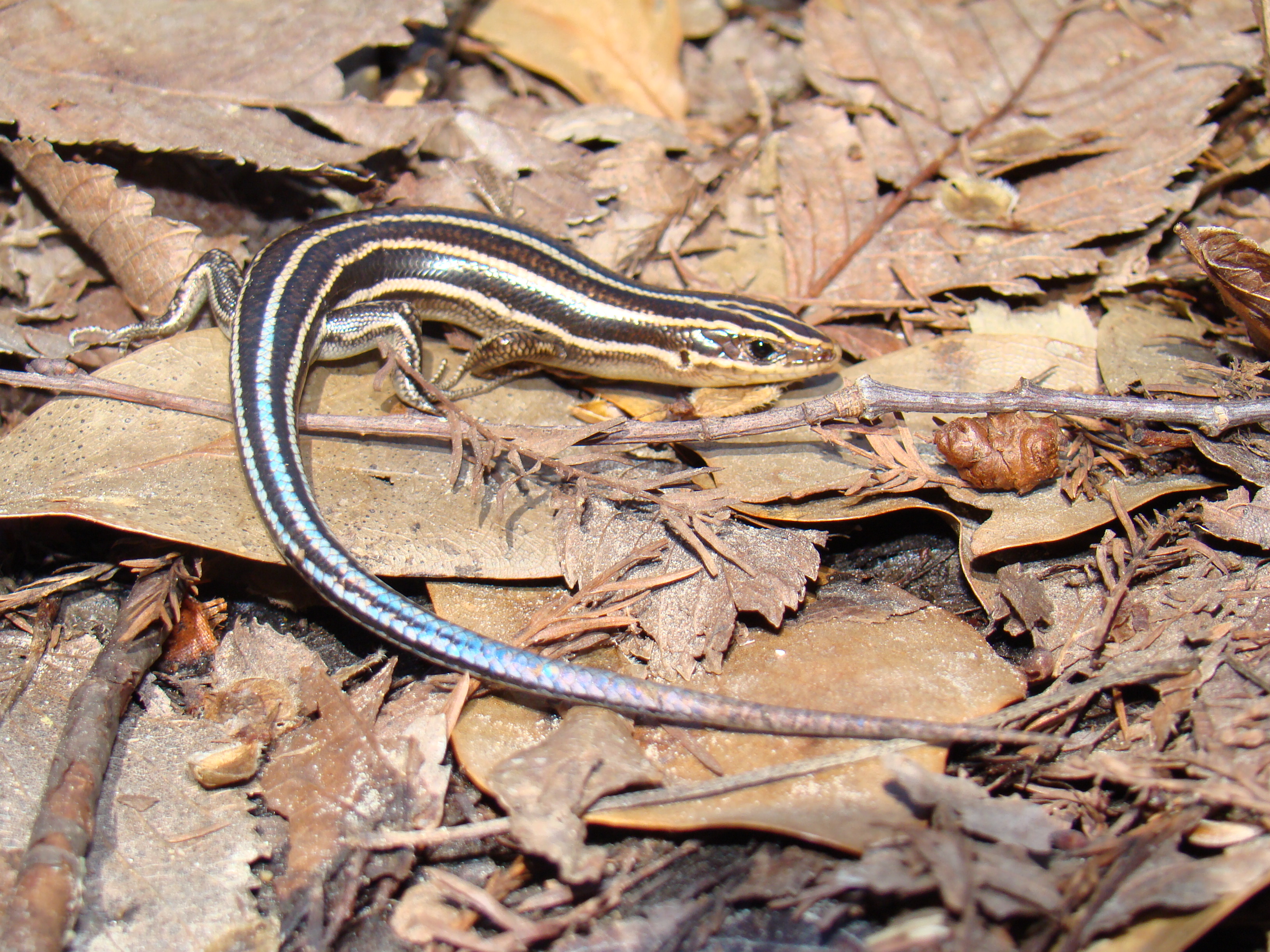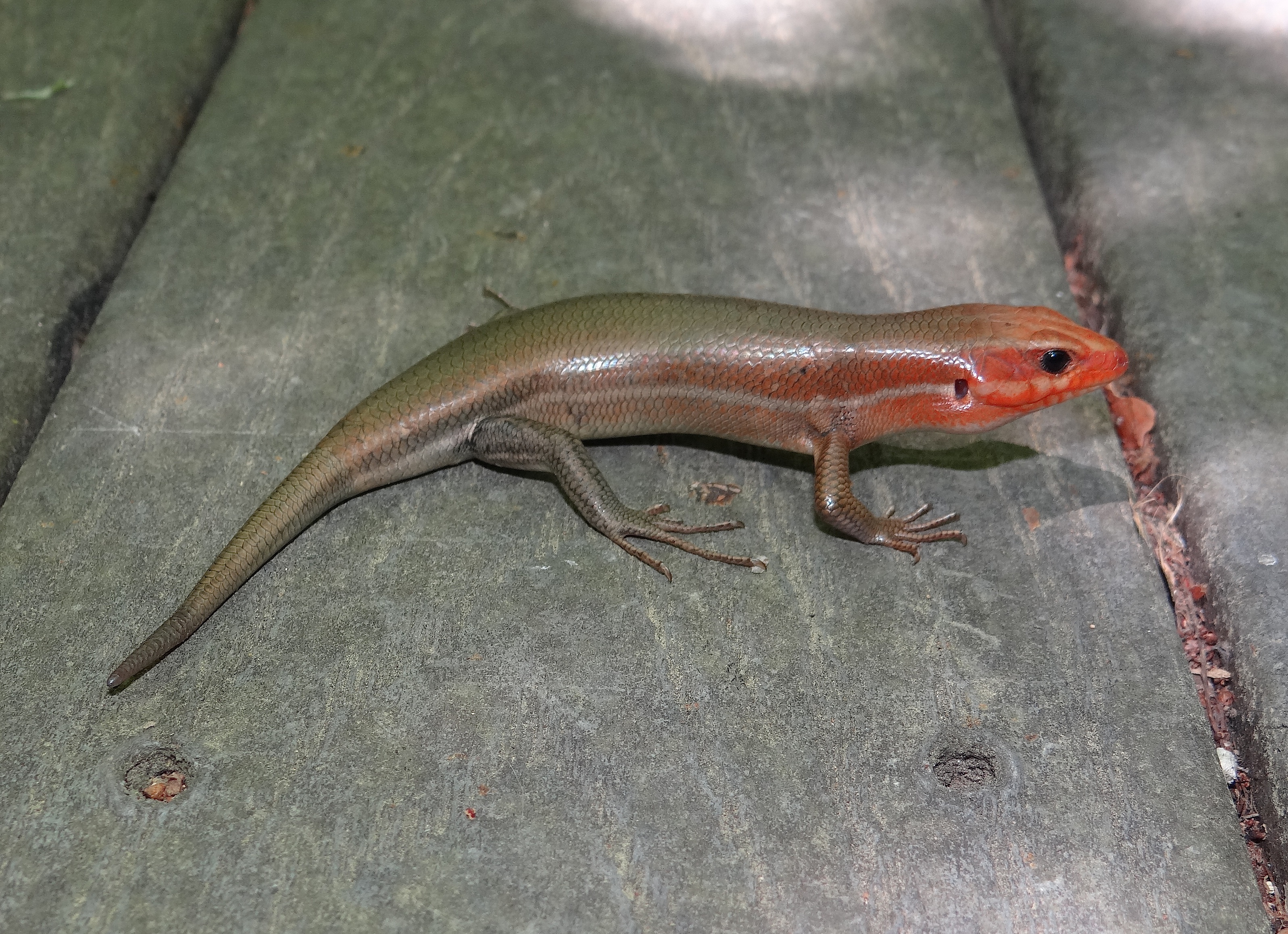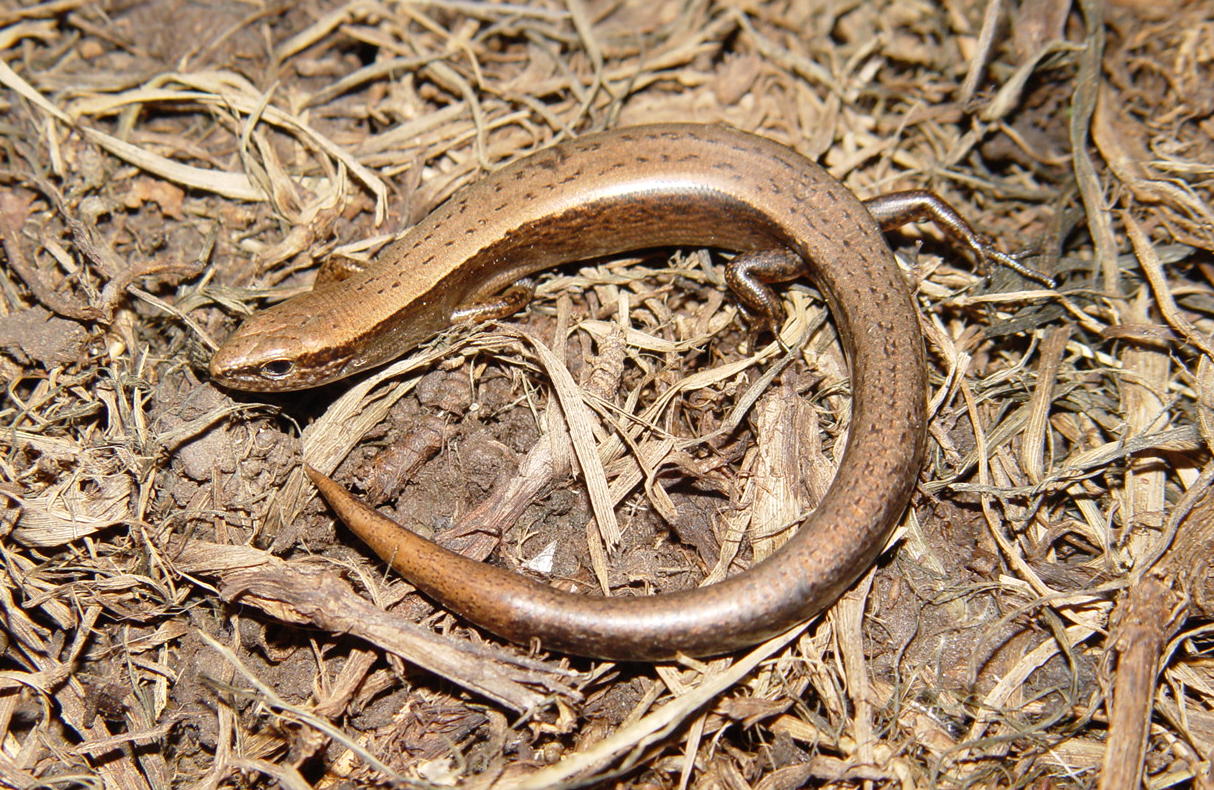Family Scincidae

|
Five-lined Skink - Eumeces fasciatus
A moderately large, shiny lizard with a pattern , in small specimens, of a blue tail and narrow yellow or white stripes on a black background (large
adults with brown body and gray tail, the stripes dull); head orange-red and swollen in jaw region of large males during breeding season,"
according to Dundee and Rossman. Maximum length is 8 1/16 inches, 205mm. The five-lined skink is almost identical to the broad-headed skink. The
most obvious difference is size; the five-lined skink is smaller than the broad-headed skink. Often seen basking on logs. Feed on vertebrates and
arthropods. Common in the park. |

|
Broad-headed Skink - Eumeces laticeps
A moderately large, shiny lizard with a pattern , in small specimens, of a blue tail and narrow yellow or white stripes on a black background (large
adults with brown body and gray tail, the stripes dull); head orange-red and swollen in jaw region of large males during breeding season,"
according to Dundee and Rossman. Maximum length is 13 inches, 330mm. The broad-headed skink is almost identical to the five-lined skink. The most
obvious difference is size; the broad-headed skink is larger than the five-lined skink. Can inflict a painful bite, but is not poisonous. Often
seen basking on logs. Feed on vertebrates and arthropods. Common in the park. |

|
Ground Skink - Scincella lateralis
A shiny brown lizard with a dark stripe on either side. Maximum length is 5 3/4 inches, 145mm. They are frequently found in leaf litter and basking
on logs. Often mistaken for snakes because they scurry away when frightened and their legs are not very visible when they are moving. Feed on insects,
spiders, and earthworms. Extremely common in the park. |
Family Crocodylidae

|
American Alligator - Alligator mississippiensis
Occasionally documented at the park. |
All photos courtesy of Brad M. Glorioso.
To see more photos, view our Facebook page.